Principles
Vowels are omitted except at the beginning and end of a word, where all vowels and diphthongs are written as a single dot. A single letter stands for both f and v, one for s and z, and another for g (either pronunciation) and j, as well as additional letters for ch, sh, th. The consonants are joined, as in cursive Latin script, apart from a couple of suffixes; when two of the same consonant come together (due to the omission of an intervening vowel), they are written with a single letter of larger size. (An exception: when two "r"s are written, without an adjoining consonant, as in 'rare', then the second is written as an italic Latin r.)
Taylor shorthand is written partially phonetically, so that, for example, an English word containing ph is written with the letter for f, and c is written as k or s. However, silent e is written with a dot, so that rear is ⟨rr⟩, but rare is ⟨rr·⟩. H tends to be omitted medially and even initially, a vowel dot written instead, presumably reflecting Taylor's pronunciation.
In addition to sounds, each letter stands for several common short words. There is a special letter for suffixes pronounced like -ious and the abbreviation viz. (used for namely or as follows).
The shapes of the letters are as follows. Because they are not supported by computer fonts, Canadian syllabics have been substituted where these have approximately the same shape (though they tend to have deeper curves and shorter lines than the shorthand letters); where a symbol is not available, a description is given. L and r are written upwards; all other vertical and diagonal letters are written downwards.
| Sound | Shape of letter | Abbreviation for |
|---|
| vowel | · (when initial or final) | |
| b | \ with a loop at top, in the direction of a ϱ, like a ᑭ tipped back
The loop switches to the left side after a vertical letter (d, g, h, k, p, t) | be, been, by |
| d | / (written downwards) | do, did |
| f, v | \ | of, off, if |
| g, j | ᑐ | go, give, God, judge |
| h | / with a loop at top, in the direction of a ρ, like a ᑭ tipped forward [1] | have, he |
| k | ᑎ | know(n), no |
| l | / with a loop at bottom, in the direction of a 6, like a ᑲ tipped forward
Written upwards; the loop switches to the left side after an n | all, lord(ship) |
| m | ᓂ The loop switches to the top, ᓇ, after an upward or straight horizontal stroke (l, n, r, s, x, y) | me, my, many |
| n | ᑌ | in, on, an, and, many |
| p | ᑭ The loop faces the other way, ᑫ, after a stroke to the lower left (d, g, h) | piece, peace, person |
| r | r when not joining another consonant; otherwise as d but upwards* | or, are, our, her, air |
| s, z | — | is, as, has, his, us |
| t | | | that, time |
| w | ᕠ It flips upside-down, ᕞ, after an upward or straight horizontal stroke (l, m, n, r, s, x, y) | with, which, who |
| x | ᓚ | example, except |
| y | / with a hook at bottom left, like a ᓚ tipped upwards | you(r), year |
| ch | ᑕ | such, chance, church |
| sh | ᓕ | shall, she |
| th | ᒋ | the, they |
| -ious | ᓗ | conscious, judicious |
| &c. | o | so forth, the world |
| viz. | ᒥ | namely, as follows |
*When the only consonant in a word is r, it is written as an italic Latin r, and so the second r in a sequence rr, but when joined to a consonant (even at the end of a word) it is written like d, distinguished by the direction of the stroke. (The direction becomes obvious when letters are joined.)
Various suffixes are plural -s (a dash over the last letter), -ly (a dot below the last letter, so ⟨:⟩ 'holy'), -ing (a ᐟ after the word, or below the last letter for -ings, so ⟨(⟩- turned 90° 'kings'), -tion (a dot above the last letter, so ⟨·(⟩ turned 90° 'notion' [2] ), -tions (a ᐟ above the last letter), -ble (as b), -ment (as m), -ject (as j), -ward (as w), -ship (as sh).
A diacritic is a glyph added to a letter or to a basic glyph. The term derives from the Ancient Greek διακριτικός, from διακρίνω. The word diacritic is a noun, though it is sometimes used in an attributive sense, whereas diacritical is only an adjective. Some diacritics, such as the acute ( ´ ) and grave ( ` ), are often called accents. Diacritics may appear above or below a letter or in some other position such as within the letter or between two letters.
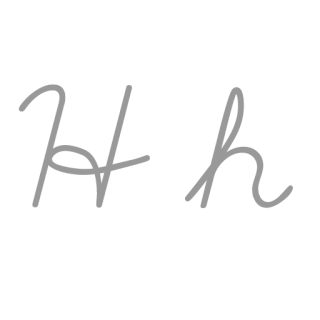
H, or h, is the eighth letter in the ISO basic Latin alphabet. Its name in English is aitch, or regionally haitch.
Esperanto is written in a Latin-script alphabet of twenty-eight letters, with upper and lower case. This is supplemented by punctuation marks and by various logograms, such as the digits 0–9, currency signs such as $ € ¥ £, and mathematical symbols. The creator of Esperanto, L. L. Zamenhof, declared a principle of "one letter, one sound", though this general guideline is not strictly followed.
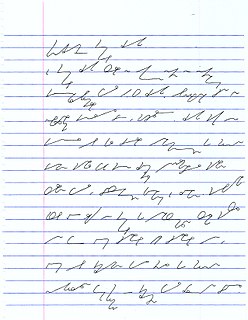
Shorthand is an abbreviated symbolic writing method that increases speed and brevity of writing as compared to longhand, a more common method of writing a language. The process of writing in shorthand is called stenography, from the Greek stenos (narrow) and graphein. It has also been called brachygraphy, from Greek brachys (short), and tachygraphy, from Greek tachys, depending on whether compression or speed of writing is the goal.
Dutton Speedwords, transcribed in Speedwords as Dutton Motez, is an international auxiliary language as well as an abbreviated writing system using the English alphabet for all the languages of the world. It was devised by Reginald J. G. Dutton (1886–1970) who initially ran a shorthand college promoting Dutton Shorthand, then offered a mail order (correspondence) self-education course in Speedwords while still supporting the Dutton Shorthand. The business was continued by his daughter Elizabeth after his death.
Pitman shorthand is a system of shorthand for the English language developed by Englishman Sir Isaac Pitman (1813–1897), who first presented it in 1837. Like most systems of shorthand, it is a phonetic system; the symbols do not represent letters, but rather sounds, and words are, for the most part, written as they are spoken. As of 1996, Pitman shorthand was the most popular shorthand system used in the United Kingdom and the second most popular in the United States.
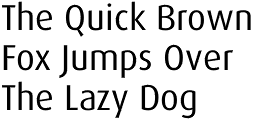
The modern English alphabet is a Latin alphabet consisting of 26 letters, each having an upper- and lower-case form. It originated around the 7th century from Latin script. Since then, letters have been added or removed to give the current Modern English alphabet of 26 letters with no diacritics, digraphs, and special characters. The word alphabet is a compound of the first two letters of the Greek alphabet, alpha and beta.

A digraph or digram is a pair of characters used in the orthography of a language to write either a single phoneme, or a sequence of phonemes that does not correspond to the normal values of the two characters combined.
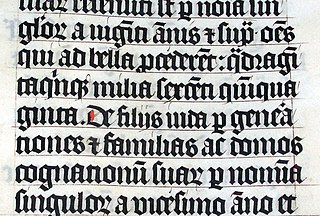
Scribal abbreviations or sigla are abbreviations used as a critical apparatus by ancient and medieval scribes writing in various languages, including Latin, Greek, Old English and Old Norse. In modern manuscript editing sigla are the symbols used to indicate the source manuscript and to identify the copyists of a work.

Canadian syllabic writing, or simply syllabics, is a family of abugidas created by James Evans to write a number of indigenous Canadian languages of the Algonquian, Inuit, and (formerly) Athabaskan language families, which had no formal writing system previously. They are valued for their distinctiveness from the Latin script of the dominant languages and for the ease with which literacy can be achieved; indeed, by the late 19th century the Cree had achieved what may have been one of the highest rates of literacy in the world.

Teeline is a shorthand system developed in 1968 by James Hill, a teacher of Pitman Shorthand. It is accepted by the National Council for the Training of Journalists, which certifies the training of journalists in the United Kingdom.
A defective script is a writing system that does not represent all the phonemic distinctions of a language. This means that the concept is always relative to a given language. Taking the Latin alphabet used in Italian orthography as an example, the Italian language has seven vowels, but the alphabet has only five vowel letters to represent them; in general, the difference between the phonemes close and open is simply ignored, though stress marks, if used, may distinguish them. Among the Italian consonants, both and are written ⟨s⟩, and both and are written ⟨z⟩; stress and hiatus are also not reliably distinguished.
In a featural writing system, the shapes of the symbols are not arbitrary but encode phonological features of the phonemes that they represent. The term featural was introduced by Geoffrey Sampson to describe the Korean alphabet and Pitman shorthand.
Speedwriting is the trademark under which three versions of a shorthand system were marketed during the 20th century. The original version was designed so that it could be written with a pen or typed on a typewriter. At the peak of its popularity, Speedwriting was taught in more than 400 vocational schools and its advertisements were ubiquitous in popular American magazines.
There are various systems of romanization of the Armenian alphabet.
The Pashto alphabet is transliterated vis-à-vis Perso-Arabic scriptural denotation with additional glyphs added to accommodate phonemes used in Pashto.

English Braille, also known as Grade 2 Braille, is the braille alphabet used for English. It consists of around 250 letters (phonograms), numerals, punctuation, formatting marks, contractions, and abbreviations (logograms). Some English Braille letters, such as ⠡ ⟨ch⟩, correspond to more than one letter in print.
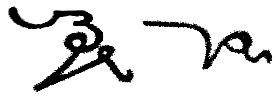
The Duployan shorthand, or Duployan stenography, was created by Father Émile Duployé in 1860 for writing French. Since then, it has been expanded and adapted for writing English, German, Spanish, Romanian, and Chinook Jargon. The Duployan stenography is classified as a geometric, alphabetic stenography and is written left-to-right in connected stenographic style. The Duployan shorthands, including Chinook writing, Pernin's Universal Phonography, Perrault's English Shorthand, the Sloan-Duployan Modern Shorthand, and Romanian stenography, were included as a single script in version 7.0 of the Unicode Standard / ISO 10646

The Korean alphabet, known as Hangul in South Korea and Chosŏn'gŭl in North Korea, is a writing system for the Korean language created by King Sejong the Great in 1443. The letters for the five basic consonants reflect the shape of the speech organs used to pronounce them, and they are systematically modified to indicate phonetic features; similarly, the vowel letters are systematically modified for related sounds, making Hangul a featural writing system.










